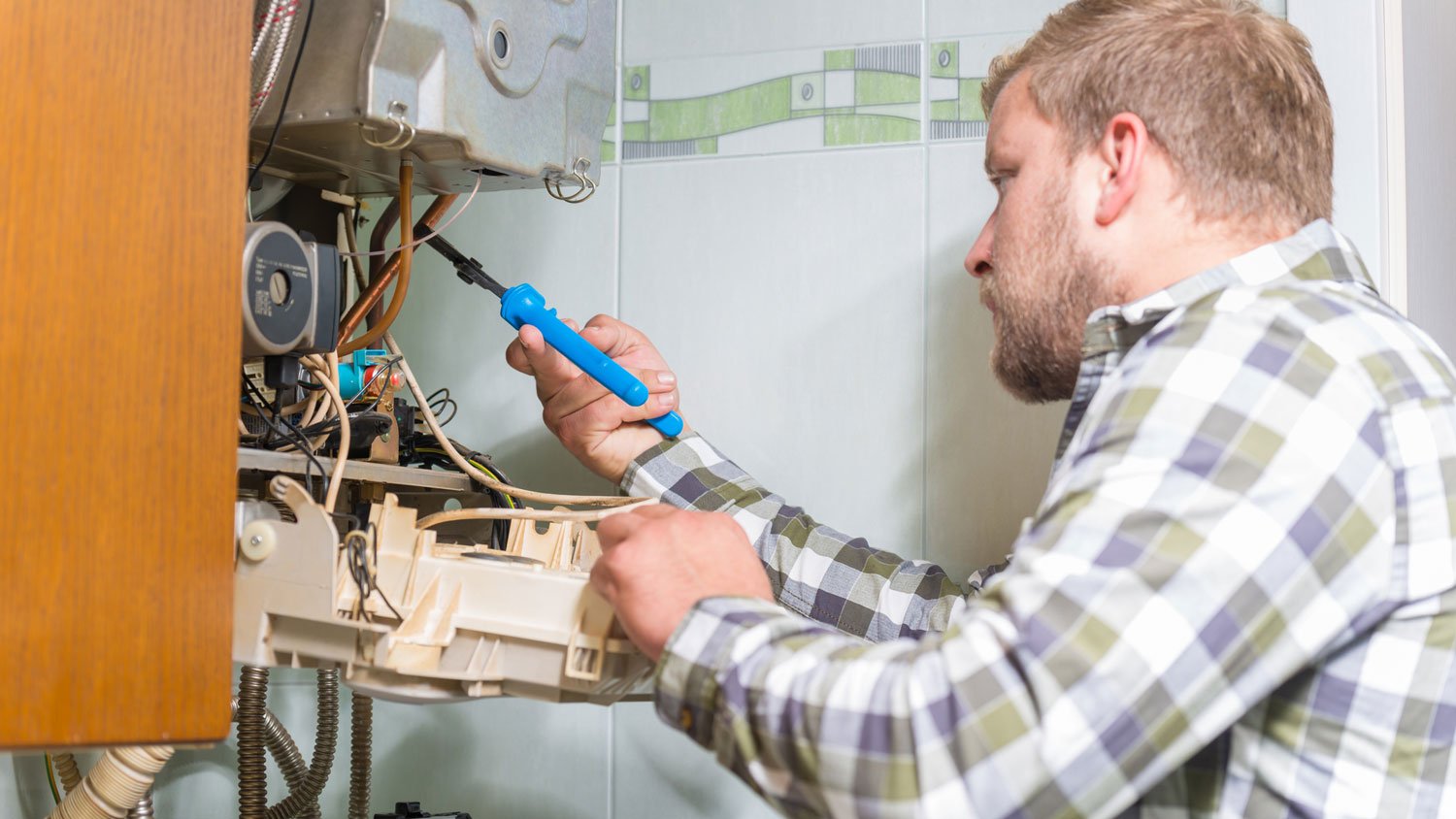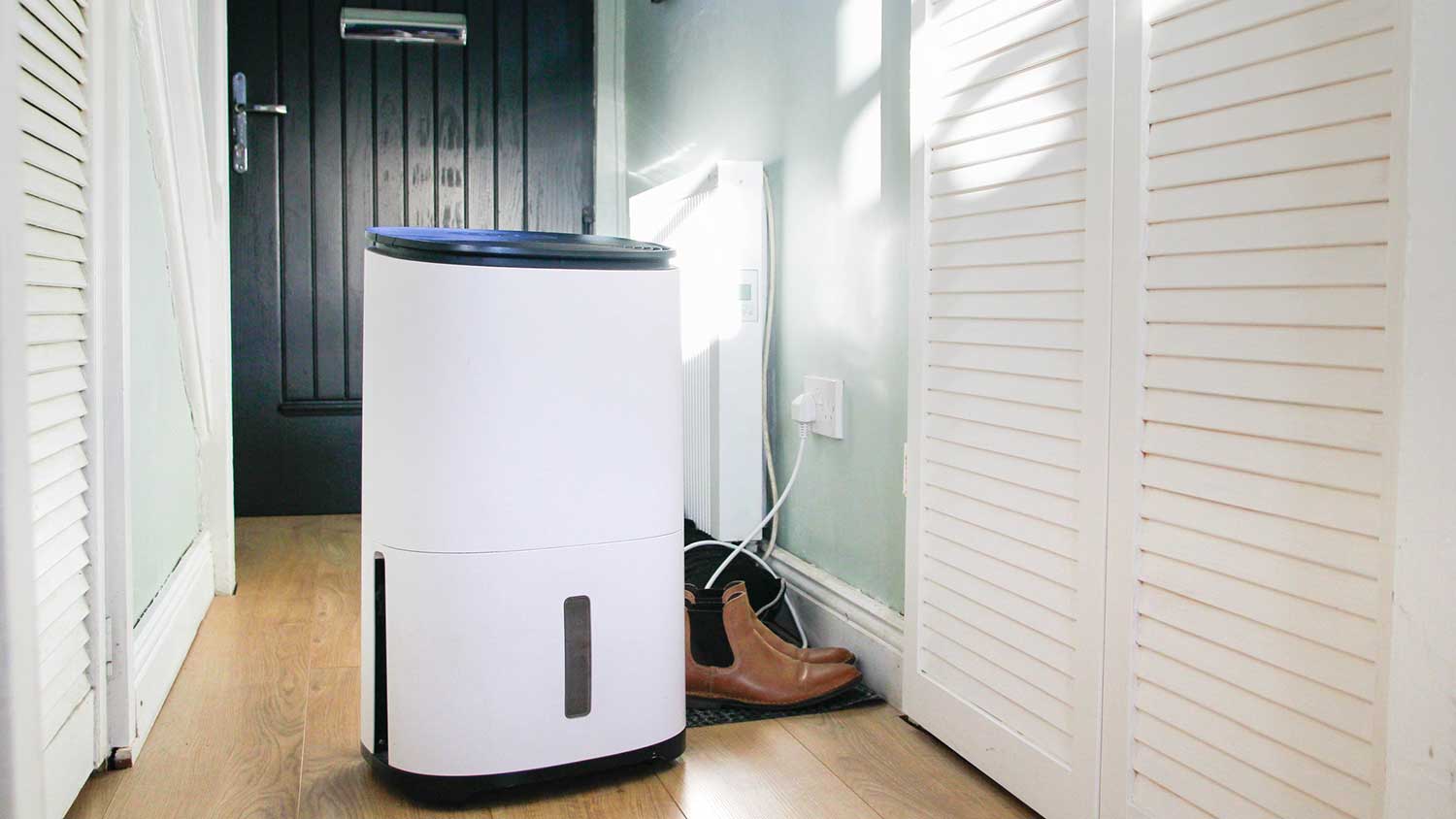8 Common Furnace Problems and How to Fix Them
Let your furnace know that winter is coming


Repairing common furnace issues can cost anywhere from $150–$300.
A qualified technician can best address most furnace problems.
Improve efficiency by regularly cleaning your furnace filter.
Have a pro inspect your furnace annually to prevent issues.
The last thing any homeowner wants is to lose heat in the dead of winter. When it happens, you may be stricken with anxiety over the potential cost of repairs and the time you might be without heat. If your furnace malfunctions, it’s important to stay calm and figure out the best course of action. Here are six common furnace problems and what to do about them.
1. Your Furnace Won’t Turn On
If your furnace isn’t running, the first thing to check is whether your thermostat is on. If it won’t turn on, replace the batteries.
If your thermostat is on and functioning normally, check if your furnace is plugged in with the access panel fully closed. If so, check to see if the furnace circuit breaker has tripped. If it’s off, flip it on; if it’s between off and on, flip it to off and then to on. If it stays on, the tripped breaker was possibly a fluke. However, if it trips again, you may have an electrical issue that a licensed electrician near you should address.
2. Your Furnace Blower Fan Won’t Shut Off
If your thermostat is set to auto (instead of on), your system should turn off once your home reaches the desired temperature. If your furnace never shuts off and you can hear the blower fan running continuously, you may have a faulty limit control switch.
This important safety control senses the air temperature and shuts your HVAC system down when it overheats. You’ll need to call an HVAC pro to repair or replace this small but critical part. This type of furnace repair costs $150 to $400.
3. Your Furnace Is Making Unusual Sounds
Some noise is expected, such as small clicks or the “whoosh” of warm air traveling through your ducts. Noises coming directly from your furnace, however, can indicate problems. To adequately address the noise your furnace is making, first identify the type of sound:
Grinding or scraping: Your ball bearings may have worn out. Turn off your furnace immediately.
Squealing or shrieking: This indicates a slipped or worn-out blower belt. If you’re confident in your ability to disconnect the motor wires and adjust or replace the belt on your own, this can be a DIY fix.
Knocking or rattling: A part may have come loose and needs to be tightened or adjusted.
Loud rumbling: This may be from fuel left over in the combustion chamber after your system has shut off.
Most of the issues behind these noises are best addressed by a professional, so save yourself time and hassle by calling a qualified local HVAC technician to diagnose and fix it for you properly.
4. Your Pilot Light Is Too Small or Won’t Stay Lit

There are several possible causes for pilot light issues. You can attempt to adjust or relight it yourself, but keep in mind that natural gas is highly flammable and dangerous. First, turn off your gas supply for several minutes to allow built-up gas to dissipate. Carefully follow your furnace owner’s manual if you go the DIY route. Other causes for pilot light issues may include:
Faulty Flame Sensor
Also called a thermocouple, this safety device contains a metal rod signaling the furnace to shut down when the flame isn’t lighting. If you suspect that it’s dirty or malfunctioning, call a pro immediately to investigate the issue. Repairs may cost $150 to $300.
Clogged Burner
This is the part of your system emitting natural gas to light your pilot. Check the color of your pilot flame. A healthy burner produces blue flames, while yellow or orange ones indicate your burner is clogged with debris and may require professional cleaning. If the burner is clogged, you may also notice a booming or rumbling noise coming from your furnace.
5. Your Filters Are Dirty
It’s important to replace furnace filters regularly as part of a routine inspection. Clogged air filters restrict airflow and make your furnace work harder. At best, you’ll end up paying more for heat with an inefficient furnace. And at worst, your system can overheat and shut down, leaving you without heat completely.
6. Your Heat Exchanger Is Cracked
You may not recognize this problem right away, but a cracked heat exchanger can be highly dangerous and has several telltale signs:
Soot on the inside of your furnace
A strong, unpleasant chemical odor
Water on the floor around the furnace
People in your home experiencing headaches, nausea, irritation, and flu-like symptoms
All these are signs your heat exchanger is leaking deadly carbon monoxide gas, which can cause carbon monoxide poisoning. If you suspect this problem, immediately evacuate your home and call an HVAC expert.
7. There’s an Unusual Odor
An odd smell emanating from your furnace can indicate potential problems needing prompt attention. When detecting smells from your furnace, it is always a good idea to contact your gas utility company and a licensed HVAC technician to address the issue and ensure your safety. Here are some distinctive odors that can signal furnace issues.
Burning or metallic odor: This scent is often associated with overheated electrical parts, a malfunctioning blower motor, or a clogged air filter—ignoring this smell could lead to further damage or even a fire hazard.
Rotten egg or sulfur odor: It indicates a gas leak from your furnace—it's crucial to turn off your furnace, ventilate the area, and evacuate your home immediately.
Musty or moldy odor: The smell may indicate moisture infiltrating your furnace or ductwork, impacting air quality—a professional should inspect your system to identify and rectify issues.
Burning dust odor: This happens when turning on the furnace after a while of inactivity—if the smell persists beyond a brief period, change the air filter.
Regular maintenance and prompt attention to odors will keep your furnace running safely and your home comfortable.
8. The Circuit Breaker Is Tripped
Even though your furnace may run on gas or oil, it relies on electricity, too. When a furnace encounters issues or malfunctions, it can overload the electrical circuit, causing the circuit breaker to trip. This is a safety measure to prevent fires and damage. Here's how a tripped circuit breaker can indicate furnace problems.
System malfunction: Components like blower motors may malfunction, drawing excessive current or short-circuiting.
Dirty air filters: They can restrict airflow within your furnace, causing it to work harder to distribute heat.
Electrical issues: Faulty electrical connections, damaged wiring, or aging components within the furnace's electrical system can also lead to circuit overloads.
Inadequate circuit capacity: A tripped circuit breaker sometimes indicates that the electrical circuit supplying power is not the correct size to handle the furnace's load—a licensed electrician near you must fix it.
How to Troubleshoot Furnace Problems
Identifying a problem on your own can help you resolve issues before they lead to costly repairs or leave you without heat during the colder months. Here are some steps and tips to guide you through the process.
Check the Thermostat
Check that the thermostat is set to "heat" mode. Set the thermostat a few degrees higher than the current room temperature to see if the furnace responds.
Verify Power Supply
Make sure the furnace is receiving power. Check that it's plugged in or that the circuit breaker hasn't tripped. Confirm that the emergency switch (often near the furnace) is in the "on" position.
Inspect the Air Filter
A clogged or dirty air filter can restrict airflow, causing the furnace to work inefficiently or even shut down. Replace or clean the filter as needed.
Listen for Unusual Noises
Pay attention to any unusual sounds from the furnace, such as banging, rattling, or squealing. These noises can indicate specific issues with components like the blower motor or fan.
Check for Ignition Problems
If you have a gas furnace, listen to the sound of the ignition. If you don't hear it, there may be an issue with the pilot light or electronic ignition system. Consult your furnace's manual for guidance on relighting the pilot light or troubleshooting ignition problems.
Inspect the Flue or Vent Pipe
Ensure the flue or vent pipe is clear of obstructions, as blockages can lead to improper ventilation and a furnace shutdown for safety reasons.
Examine the Circuit Breaker
If the circuit breaker trips repeatedly, it could indicate an electrical issue within the furnace. Reset the breaker and monitor whether it trips again. If the problem persists, you may need to hire a licensed local electrician.
Check for Gas Supply
Gas furnaces require a steady supply of natural gas or propane. Ensure the gas valve supplying the furnace is open and there are no gas leaks. Refer to the furnace manual regarding the valve.
Look for Error Codes
Many furnaces have LED displays that show error codes when there's a problem. Refer to your furnace's manual to interpret these codes.
Seek Professional Assistance
Contacting a local HVAC technician is advisable if you've gone through these troubleshooting steps and can't identify or resolve the issue. They have the expertise and tools to diagnose and repair more complex furnace problems safely.
It bears repeating that safety should always be a top priority when troubleshooting your furnace. If you ever detect a strong gas odor, hear strange noises like a hissing sound, or doubt your ability to troubleshoot the furnace safely, evacuate your home and call a professional immediately. Regular maintenance and prompt attention to issues can keep your furnace running efficiently and extend its lifespan.
Preventive Furnace Maintenance
If you haven’t yet experienced any of these common issues with your furnace, you can avoid them altogether with preventive maintenance. Have a professional HVAC technician conduct an annual furnace inspection and service before cold weather hits. This helps keep your furnace running efficiently throughout the winter and saves you money on energy costs in the long run.
Nick P. Cellucci contributed to this article.
Frequently Asked Questions
The blower motor and the ignitor are the most common components to fail first in a furnace. The blower motor is responsible for circulating heated air throughout the home. Over time, it can wear out due to constant use. The ignitor, especially in older furnaces with pilot lights, can also fail due to wear and tear. Other potential failure points include the thermostat, heat exchanger, and various electrical components. Regular maintenance and timely replacements of these components can extend the furnace's lifespan and ensure efficient heating during the colder months.
A dirty or clogged air filter is the most common reason a furnace stops working. Over time, the filter can become laden with dust, debris, and contaminants, obstructing airflow and causing the furnace to overheat. This overheating triggers a safety mechanism that shuts down the furnace to prevent damage or fire hazards. Regularly replacing or cleaning the air filter is essential to maintain proper airflow and ensure the furnace's smooth operation.
To reset the furnace, push the reset button to reboot. If that doesn't work, turn off the power and wait up to 10 minutes before restarting. You may need to reset the circuit breaker associated with the furnace. Also, try resetting the thermostat—if it has a "reset" or "off" button, press it. Then, set the thermostat to your desired temperature for heating. Lastly, monitor the furnace. Listen for the furnace to start up and observe its operation. If it doesn't start or issues persist, it's best to consult a professional HVAC technician for further diagnosis and repairs.





- Furnace Repair
- Air Conditioning Repair
- HVAC Repairs
- Furnace Installation
- Wood & Pellet Stove Repair
- Dehumidifier & Humidifier Repair
- Heat Pump Companies
- Swamp Cooler Repair
- Wood Stove Services
- HVAC Companies
- Commercial A/C Repair
- Geothermal Installation
- Air Conditioning Installation
- Boiler Repair
- 24 Hour Furnace Repair
- Geothermal Repair
- Heat Pump Repair
- Humidifier Installation
- Thermostat Repair
- Thermostat Installation
- Nest Installation
- Heating & Cooling
- Heating Repair
- Furnace Cleaning
- Furnace Tune-Up
- HVAC Technicians
- Subcontractors
- Furnace Maintenance
- Plumbing & Heating Companies
- Wood Stove Inspection
- Mini Split Installation
- Wall Heater Repair
- Duct Installers
- Your Complete Gas Furnace Inspection Checklist
- 10 Furnace Troubleshooting Tips: How to Fix Any Heating Issue
- 6 Signs of Furnace Problems
- Why Is My Furnace Not Blowing Hot Air? Troubleshooting 13 Common Problems
- 7 Common Furnace Problems: Signs, Causes, and Solutions
- What Is a Furnace and How Is It Different From Other Heating Systems?
- Why Is My Furnace Not Keeping Up With Cold Weather?
- How Long Do Furnaces Last and How Can I Extend the Life Span of Mine?
- How to Know If You Should Repair or Replace Your Furnace
- 16 Furnace Maintenance Tips to Keep Your Home Cozy All Season Long










